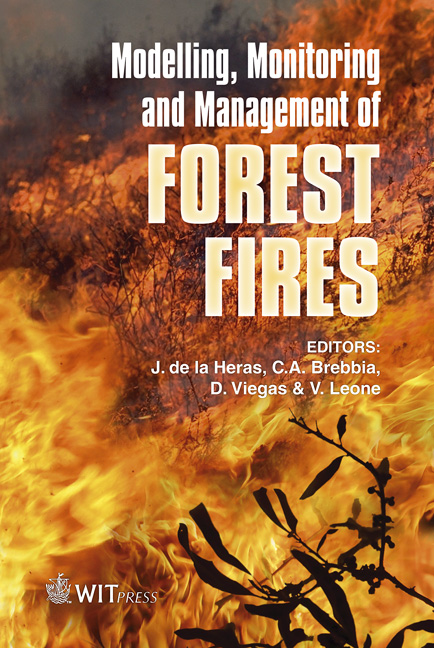A Post-fire Management Model To Improve Aleppo Pine Forest Resilience
Price
Free (open access)
Transaction
Volume
119
Pages
9
Page Range
311 - 319
Published
2008
Size
332 kb
Paper DOI
10.2495/FIVA080311
Copyright
WIT Press
Author(s)
D. Moya, J. De las Heras, F. R. López-Serrano & V. Leone
Abstract
The number of forest fires, their severity and recurrence, the surface burned and the duration of fire risk season have increased in the Mediterranean basin over the last few decades. These factors promoted an increase of naturally regenerated, unmanaged pine forests and as a consequence, the risk of new wildfires. Aleppo pine (Pinus halepensis mill.) is an obligate seeder adapted to fire-prone habitats, and a very important timber species affected by this phenomenon. In eastern Spain alone more than 100 000 ha of Aleppo pine forests were burned in summer, 1994. One of the forests (naturally regenerated) was selected in order to design an adequate post-fire management model. Several plots were set in two different sites of the fires considered. Silvicultural treatments were carried out at five and ten years after the fire. All trees in the selected plots were marked and monitored. Growth, reproductive characteristics and several allometric parameters were measured in the treated plots. Several measurements in burned (all treated and control plots) and unburned plots were recorded in order to obtain structural patterns and biodiversity indices, The plots thinned ten years after the fire and the unburned plots showed a regular, non-aggregated distribution pattern and low diameter differentiation. Also, these thinned plots showed biodiversity characteristics similar to mature stands. The increases and final values for growth and reproductive characteristics measured in the monitored plots were different for each site but thinning improved growth and the amount of seeds stored in the canopy, thus insuring a more successful regeneration should fire affect the same site again in the early life stages. The optimal management policy obtained improves growth and reproductive processes, shortens the juvenile phase, accelerates the mature age and increases the canopy seed bank. It reduces the immaturity risk and improves the post-fire resilience. Keywords: thinning, pruning, biodiversity, immaturity risk, canopy seed bank.
Keywords
thinning, pruning, biodiversity, immaturity risk, canopy seed bank.





